Glencoe’s Award-Winning History Center
GLENCOE’S BLACK HERITAGE
Glencoe Historical Society Museum
375 Park Avenue, Glencoe IL
Open on Wednesdays from 10 a.m. to 3 p.m.
and on Sundays from 1 p.m. to 4 p.m. or by appointment
For more information, call 847-835-0040 or email info@glencoehistory.org
Glencoe has been home to a dedicated Black community since the mid-1880s.
This exhibit examines how these residents lived, worked, and worshipped in our Village
and how their experiences changed over the years.
The galleries in the 375 Museum introduce visitors to our earliest Black residents,
exploring why they came and describing the town they encountered when they arrived.
The galleries in the 377 Museum look candidly at more difficult times and discuss how racism and discrimination following World War I impacted the Black community and the Village as a whole.
Both buildings include stories of the many extraordinary Black residents who helped shape
the Village, the City of Chicago, the nation, and the world.
The 375 Museum
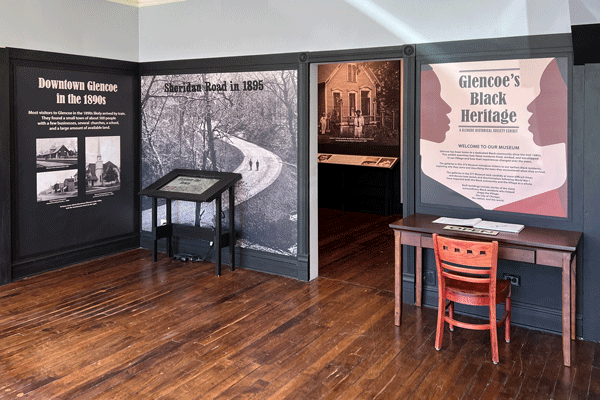
The Main Gallery
As visitors enter the 375 museum, they are welcomed by a display that discusses why early Black settlers came to Glencoe. Five years of new research has added to our understanding of the principal factors that drew Blacks to Glencoe in the mid-1880s: A Welcoming Community, Affordable Land, A Desegregated Educational System, and Entrepreneurial Employment Opportunities. This Gallery also contains an interactive touchscreen monitor that allows the visitor to see photos of the community as it existed when Glencoe’s first Black settlers arrived.
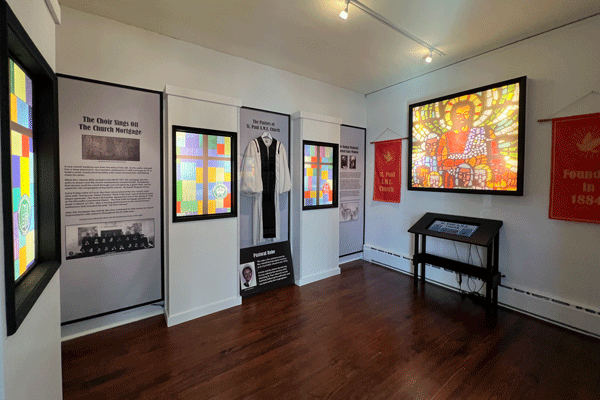
The West Gallery
The West Gallery is dedicated to St. Paul African Methodist Episcopal Church founded in 1884 and its remarkable 139-year history. Visitors can learn more about the founding of the church, the devastating arson fire that destroyed the original building in 1930, the choir that helped rebuild the church, and more about the interior architecture, community, and philanthropic work of the congregants. The stained glass windows in the Gallery are reproductions of the windows in the current sanctuary.
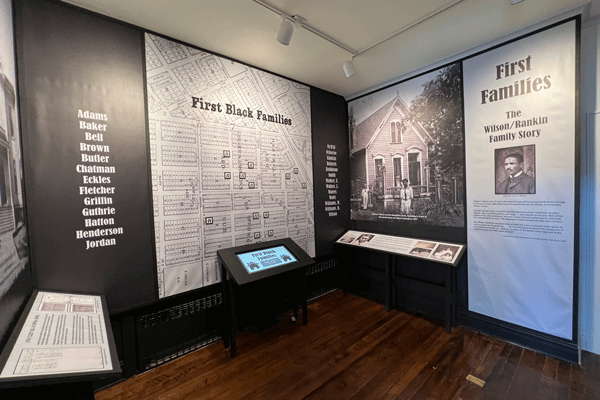
The North Gallery
The North Gallery tells the stories of the first Black families to settle in Glencoe. The inspiring stories of the Homer Wilson and Phillip Bell families are featured along with a map and interactive touchscreen that tells visitors more about each of the families that had arrived in Glencoe by 1900. The east wall of the gallery features rotating boxes that include photos and vignettes that underscore how Glencoe became an integrated and culturally active community in the late 19th century.
The 377 Museum

The South Bay
The displays in 377 museum begin by chronicling national and local events following World War I that showed increasing racial tension. Panels contrast race riots in St. Louis, Chicago, and Tulsa, Oklahoma with descriptions of simultaneous local events in Glencoe. Visitors are introduced to the formation of the Glencoe Homes Association (the “Syndicate”), a group of prominent residents who bought land and Black homes in south Glencoe, which were then resold to developers who built elegant single family residences and resold them with restrictive covenants prohibiting sale, occupancy, or use by Blacks, Italians and Greeks.
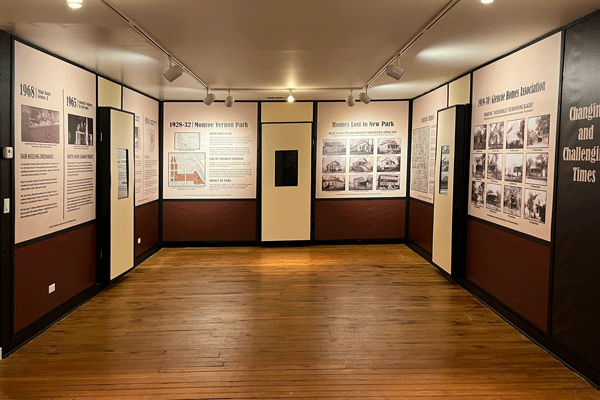
The East Bay
The story continues in the East Bay with photos, maps and details of the Syndicate’s activities in the early 1920s. Those activities helped to reduce the Black population in Glencoe from 10% of the total to 4.9% of the total by the beginning of 1930. Displays also explain how eminent domain condemnations (used to create Monroe Vernon -now Watts- Park) and redlining practices further impacted the Black population. Panels and interactive monitors provide details behind the desegregation of Glencoe Beach in 1942, the North Shore Summer Project in 1965, and Glencoe’s Fair Housing Ordinance in 1968.
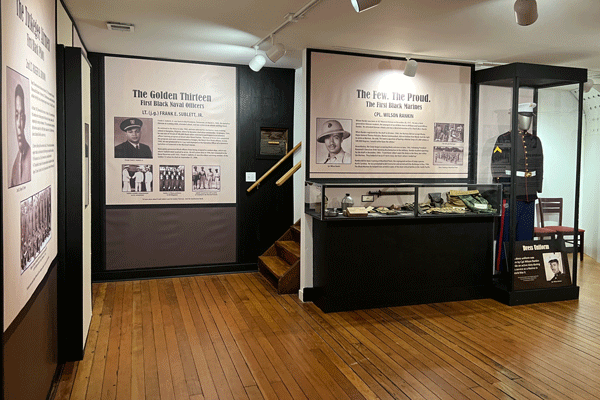
The West Bay

